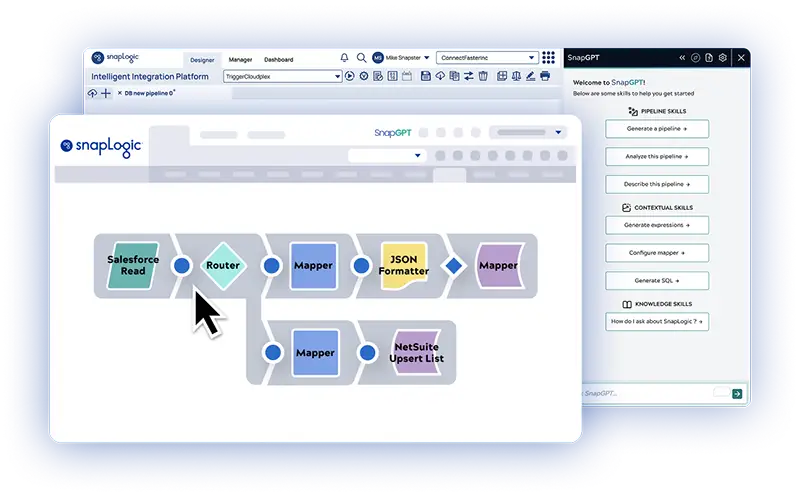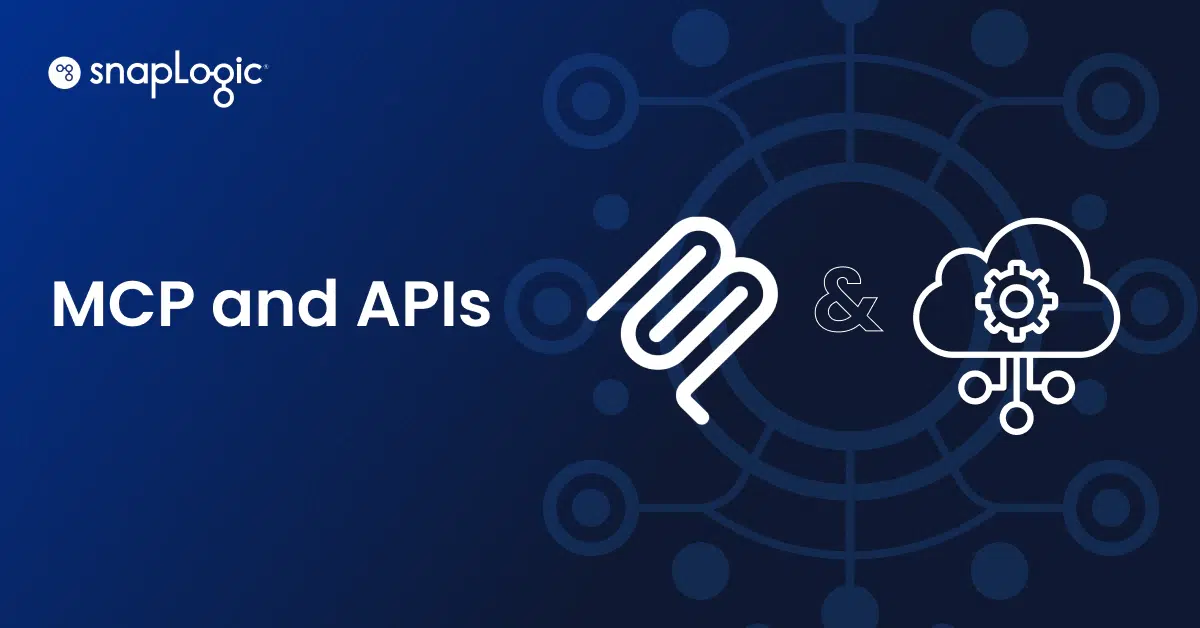In this 2nd post from the new SnapLogic Integration Cloud technical whitepaper, we’ll dive into the Elastic Integration Platform as a Service (iPaaS) architecture. Specifically, we’ll describe the components of the “control plane.” In the first post we covered our cloud connectors, called Snaps.
The SnapLogic Integration Cloud is architected on the concepts of software-defined networking (SDN). The system is decoupled into two main areas: a “control plane” and a “data plane.” The control plane controls where and how data is processed based on user configuration and preferences and some optimization algorithms. The data plane (aka the Snaplex) does the actual processing of data as per instructions received from the control plane.
Control Plane
The control plane is a 100% multi-tenant service, hosted on the Amazon Web Service (AWS) infrastructure. The control plane consists of components that constitute the three web applications (Designer, Manager, Dashboard) and several key subcomponents that collectively manage the data plane.
The control plane consists of the following components:
- Hardware and Software Load Balancers: Route incoming requests to the appropriate component based on the type of incoming request (e.g. a designer request gets routed to the designer web app, or an incoming pipeline request gets routed to the appropriate data plane).
- Security: Manages the authorization and authentication of users accessing the web applications.
- Scheduler: Manages scheduled tasks and jobs of integration pipelines.
- Controller: The control point where elasticity, lifecycle, software updates, etc. of all runtime components are managed.
- Metadata Repository: Stores pipeline metadata in a fully redundant, secure database (MongoDB). This is where the integration pipeline metadata such as mapping and configuration data etc. is stored. This Metadata Repository is configured for backup and recovery to ensure multi-zone availability by leveraging Amazon Web Services? Disaster Recovery services.
- Amazon S3 for File System and Log Servers: Stores system files and pipeline generated log files in a secure and resilient environment.
- SnapWatch: The management and monitoring tool for the SnapLogic DevOps team to administer the entire SnapLogic Integration Cloud infrastructure.
The control plane is multi-tenant and supports a multi-organization configuration. This means each organization (or ?org?) provisioned in the SnapLogic Integration Cloud gets a view into its integration pipelines and configurations, which are managed and run independently of other tenants. Customers can also create and manage sub-organizations within a parent organization and manage them as separate departments with fine-grained access control. Sophisticated access control capabilities also allow administrators to group users and grant them group-level permissions to collaborate on integration projects.
In the next post we’ll cover the “Data Plane” – the Snaplex. To dive deeper into the underpinnings of the SnapLogic Integration Cloud, be sure to download this white paper.








